Sailing 201: What do we do once sails are up?
- Christine
- Feb 16, 2022
- 4 min read
The number of activities are endless when under sail...
What do we do once the sails are up?
Turn off the motors, if they are not needed
Set the route and the autopilot so we do not have to constantly steer, however must remain alert for any obstacles such as fishing buoys, large rocks, fishing boats or other boats not on our electronic chart plotter.
Can set the autopilot for the best heading towards our destination.
Or can set to maintain a specific angle to the wind to keep the sails happy.
One crew member must always be on alert at the helm on the fly bridge or in the galley area and needs to be ready to take very quick action should something come up (a squall, a moving/stationary obstacle, boat issue).
There are so many options of where to spend time while under sail, if you are not the assigned crew member on watch (though we all are on alert usually, looking out for each other, regardless of what we are doing). You can hang out where there are other crew members to chat with or you can sit with others and do your own thing or find a section of the boat where there is no one around if you need “alone time.”
Other crew members not on watch normally enjoy sitting on the couch up on the flybridge, enjoying the sun, refreshing sea breeze, and taking in the beautiful scenery.
Some enjoy sitting alone on the seat at the bow of the boat or on the trampoline (to sunbathe), watching for dolphins, whales, turtles, flying fish and sea birds and taking lots of photos. Many squeal in delight at the occasional sea spray at the bow of the boat.
There is also a nice couch seating area between the trampolines and the windows of the boat which is great for sunbathing, reading a book, taking a nap, working on your computer, scrolling through your phone, meditating, listening to music, etc.
For those who need a respite from the sun, the cockpit area in the stern is shaded and has a nice set of cushions to lie on or you can sit at the table and work on your computer, read, etc.
Some of our Atlantic Crossing crew members were avid fishermen and brought their own gear for some trolling while underway.
There is always a crew member assigned for lunch or dinner each day, so we always know we will be fed well each day. Normally we each do our own breakfasts.
Snacking and drinking (no alcoholic beverages when under way) is a given any time on the boat.
There is enough room to spread exercise mats while under sail, if one needs to stretch or do calisthenics.
We have a stereo on board and can pipe music from our phones throughout the boat, inside and outside, which is nice.
Sometimes, we need to make adjustments to our sail plan/destination depending on wind/sea conditions, approaching sunset, or if we find some place super interesting and decide to stop there instead, etc.
Top chart plotter gives us an overview of data to monitor. Other instruments give us more detailed information on heading, true wind speed and current.
What are we monitoring while sailing?
Our chart plotter has a lot of data and a good visual of our surroundings both above and below the water line. This is never a replacement for using our own eyes and ears to monitor what is going on around us and on our boat as things can deteriorate rapidly if we miss certain cues. (Situational awareness is Dale’s favorite mantra).
Some of the data that are posted real time that are useful, but are most useful when looking over a period of time rather than discretely:
SOG (Speed Over Ground) - How fast are we sailing?
COG (Course Over Ground) - Where are we heading?
TWS (True Wind Speed) - Wind Speed
AWS (Apparent Wind Speed) - How fast are we going taking into account the effects of the wind, current and swells? Useful for deciding which sails to use and how to trim the them.
AWA (Apparent Wind Angle) - Where are we really headed, taking into account the effects of the wind, current and swells? Decisions on which sails to use and how to trim the sails are made based on this information.
GPS Position - Where are we?
Our chart also shows our position relative to land, to other boats and obstacles such as shipwrecks, large rocks, fishing farms, buoys, etc. and shows ocean depths, sea floor composition.
Our touch screen allows us to zoom in and out to look at many details such as finding distances from one point to another, tapping on boats on the monitor to get information on what type of boat it is (cargo ship, motor boat, sailing vessel, etc.), their speed, heading and most importantly, the CPA (Closest Point of Approach) and TCPA (Time of Closest Point of Approach)
We keep careful watch over time on the screen to determine if we are in danger of colliding with another boat based on CPA and TPA and need to be ready adjust our course when we get closer or in some cases, it is necessary to radio to that boat to confirm their course and to wake them up. Usually the massive cargo ships cruising at more than 3 times our speed will change courses slightly in plenty of time to avoid a collision.
If it is necessary to change courses to avoid a collision, it usually involves tapping the autopilot a couple degrees to the left or right and then adjusting again after passing another boat or obstacle.
We constantly monitor the shape of the sail and trim it to insure we are sailing efficiently and to make sure that the sail is not being too stressed. Sometimes, we need to change sail configurations, tack/jibe if the wind direction or speed has changed.
An occasional walk around the boat is necessary to check for anything that looks, sounds or smells unusual (such as a missing life raft, loose fittings, any chaffing of the lines, leaking toilet, etc.)
.png)

















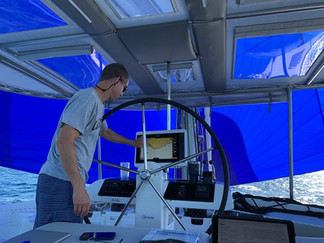









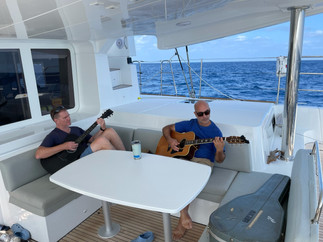





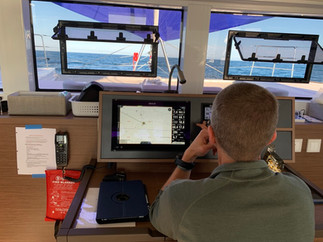



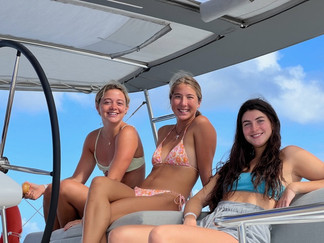




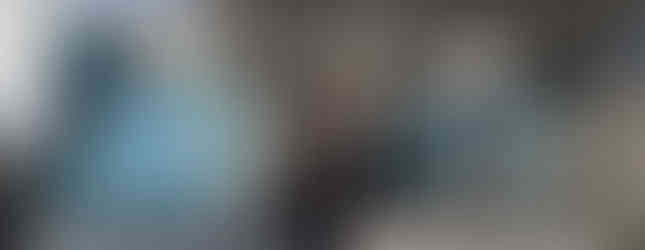





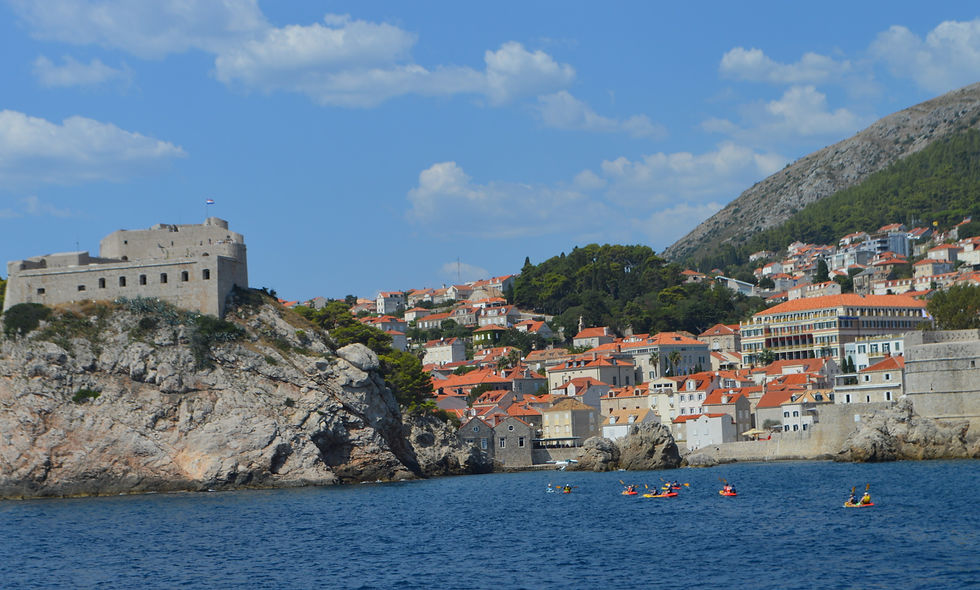


Comments